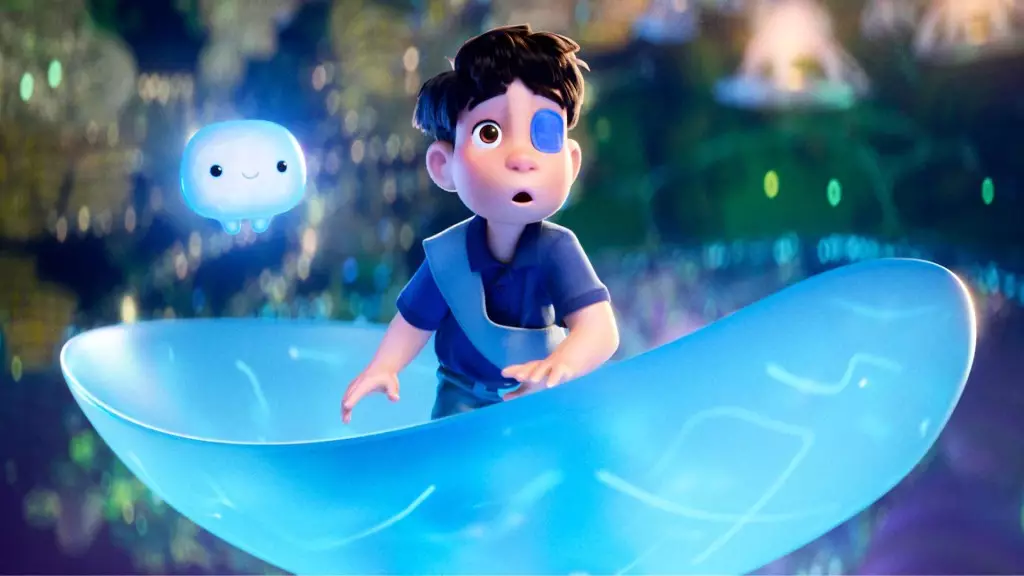The recent release of “Elio” serves as a troubling indicator of the profound shifts occurring in the animated film landscape, particularly for Disney and Pixar. With an opening weekend generating only $21 million, “Elio” has the dubious distinction of experiencing the worst debut for any Pixar film to date. Such a stark underperformance raises eyebrows, suggesting a broader malaise in audience appetite for original animated stories. The film’s respectable Rotten Tomatoes rating of 84% makes the disparity all the more puzzling—how can a well-reviewed movie flop so spectacularly? As the media analyst Doug Creutz pointedly notes, the divide between original animated features and sequels or established franchises has widened significantly since the pandemic. This disparity is disquieting not just for Disney’s animation division but also for the company’s overarching financial health.
The User-Centric Recalibration of Animation Consumption
What becomes increasingly clear is that the market is exhibiting a shift—viewers are gravitating toward familiar, nostalgic content rather than venturing into uncharted narrative territories. The ripple effect of this may have dire consequences. Studios like Disney may respond by funding fewer original properties, opting instead to lean into sequels that promise financial stability. It’s a trend that betrays both a risk-averse mentality and a lack of faith in the audience’s ability to embrace new stories. Although one cannot wholly blame executives for prioritizing sequels, this seems to diminish the cultural richness that original storytelling brings to the cinema.
The commentary from Creutz should serve as a wake-up call: if studios become overly dependent on established franchises, what happens to the potential for creative innovation in animation? The irony is that, while Disney’s animated portfolio has historically been rooted in both magic and imagination, the current corporate strategy may be smothering creativity in favor of cold, hard cash. The decrease in original animated storytelling not only threatens studios’ IP growth but also denies audiences the opportunity for new characters and narratives to fall in love with.
The Impact on Disney’s Business Structure
Perhaps even more alarming is how this trend resonates within the financial framework of Disney itself. The company’s parks and consumer products are built not only on iconic characters but also on new storytelling paradigms that can energize the visitor experience. As a consultancy CEO pointed out, intellectual property is the linchpin of modern theme park revenue streams. When moviegoers show a decreasing appetite for new tales, it jeopardizes the entire ecosystem, from studio production to park experience.
“Elio” being pushed from 2024 to 2025 speaks volumes about Disney’s anxiety over resource allocation and risk management. The decision certainly encapsulates how the company is increasingly fearful of a financial misstep, especially during tumultuous periods like CEO Bob Iger’s proxy fight. If the potential for blockbuster originals fades, what then becomes of the rich tapestry of our imaginative landscape?
The Financial Numbers Don’t Lie
Creutz’s observations reveal a staggering statistic: the average gross for original animated titles, including those from Disney and Universal, has plummeted to approximately $412 million since 2022. This figure starkly contrasts with the $844 million average garnered by sequels. Take that in: original stories now earn less than half of their sequel counterparts—a disheartening proposition for any studio committed to nurturing creative talent. The reality is further complicated by the inclusion of a phenomenon like “The Super Mario Bros. Movie” as an original success, even though it leans heavily on a legacy franchise.
The animation landscape is not merely facing turbulence; it is undergoing a fundamental transformation that could alter how stories are told and received. The lack of new hit properties is more than a mere statistic; it reflects a cultural shift that threatens to stifle imagination in favor of established narratives. As audiences increasingly cling to the comfort of the familiar, one can’t help but question the long-term ramifications for both the film industry and our cultural fabric at large.

